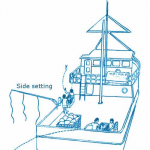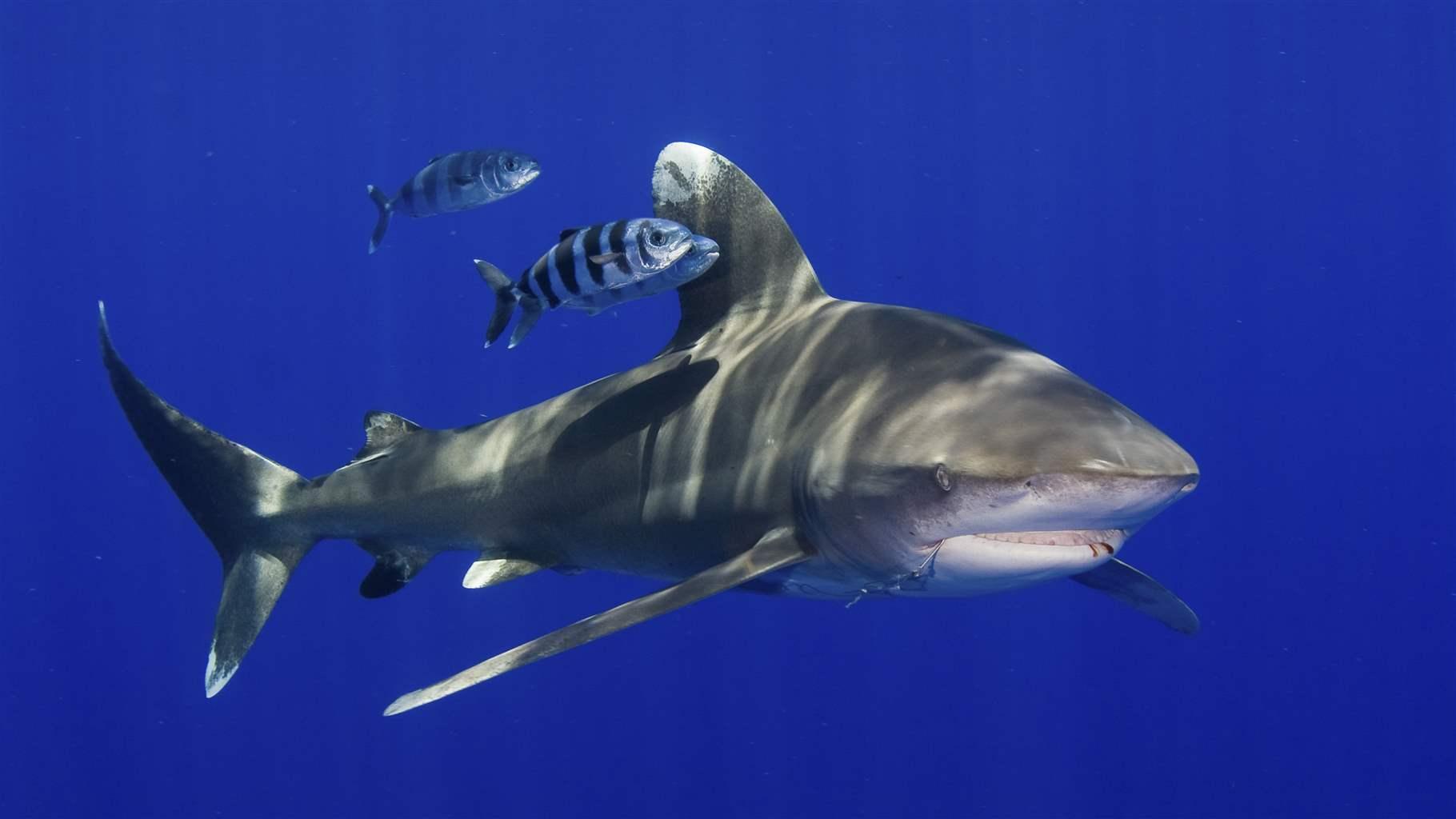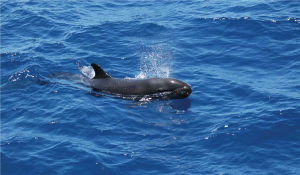Protected Species Management Measures
A variety of management measures are in place to reduce the bycatch of protected sea turtle, seabird, and marine mammal species. To read about the specific measures in place for each species group, click on one of the following links:
To learn more about all of these protected species management measures, see the Protected Species Conservation Monograph.
For more information on the species that are protected by these measures, see the list of species page.
SEA TURTLES
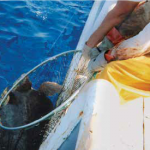 Due to high sea turtle bycatch rates, several time-area closures of the swordfish fishery were implemented after 1999, and a full closure of the swordfish sector of the Hawai‘i-based longline fishery went into effect in 2001. This closure lasted until April 2004. In 2004, a number of sea turtle bycatch mitigation measures went into effect. An analysis of the swordfish longline fishery observer data for the period of 2004-2007 showed that interaction rates of leatherback and loggerhead turtles declined by 83 percent and 90 percent, respectively, compared to pre-regulation interaction rates (Gilman et al. 2007).
Due to high sea turtle bycatch rates, several time-area closures of the swordfish fishery were implemented after 1999, and a full closure of the swordfish sector of the Hawai‘i-based longline fishery went into effect in 2001. This closure lasted until April 2004. In 2004, a number of sea turtle bycatch mitigation measures went into effect. An analysis of the swordfish longline fishery observer data for the period of 2004-2007 showed that interaction rates of leatherback and loggerhead turtles declined by 83 percent and 90 percent, respectively, compared to pre-regulation interaction rates (Gilman et al. 2007).
The following summarizes sea turtle mitigation measures in the Hawai‘i-based longline fishery:
- The following regulations apply to all longline vessels (including American Samoa-based vessels):
- Longline vessel owners/operators are required to adhere to regulations for safe handling and release of sea turtles.
- Longline vessel owners/operators must have on board the vessel all required turtle handling/dehooking gear specified in regulations.
- Vessel owners and operators are required to annually attend protected species workshop
- When shallow-set longline fishing north of the Equator:
- Use 18/0 or larger circle hooks with no more than 10° offset.
- Use mackerel-type bait.
- 100 percent observer coverage.
- Individual trip interaction limits of 5 loggerhead turtle and 2 leatherback turtles per trip.
- Closure for remainder of year when fishery reaches an annual interaction limit (“hard cap”) of 16 leatherback turtles.
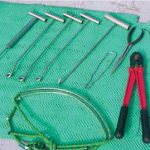 Examples of sea turtle handling gear required for Hawai’i-based longline vessels. |
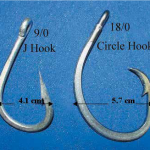 Large circle hooks replaced J-hooks when the Hawai‘i-based swordfish longline fishery reopened in 2004. |
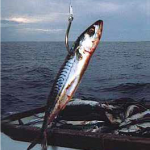 Mackerel bait replaced squid bait when the Hawai‘i-based swordfish longline fishery reopened in 2004. |
When the federal observer program for the American Samoa longline fishery started in 2006, it was discovered that the fishery had occasional green turtle interactions. In 2009, the Council recommended a measure to mitigate green turtle interactions by requiring longline gear configuration in such a way that all hooks are set deeper than 100 meters. Since the measure became effective in 2011, the estimated total interactions have been about seven green turtles per year, a substantial reduction compared to an estimated 30 per year before the implementation.
In the American Samoa longline fishery, owners and operators of vessels longer than 40 ft (12.2 m) must use longline gear that meet the following requirements:
- Each float line must be at least 30 m long.
- At least 15 branch lines must be attached to the mainline between any two float lines attached to the mainline.
- Each branch line must be at least 10 m long.
- No branch line may be attached to the mainline closer than 70 m to any float line.
- No more than 10 swordfish may be possessed or landed during a single fishing trip.

